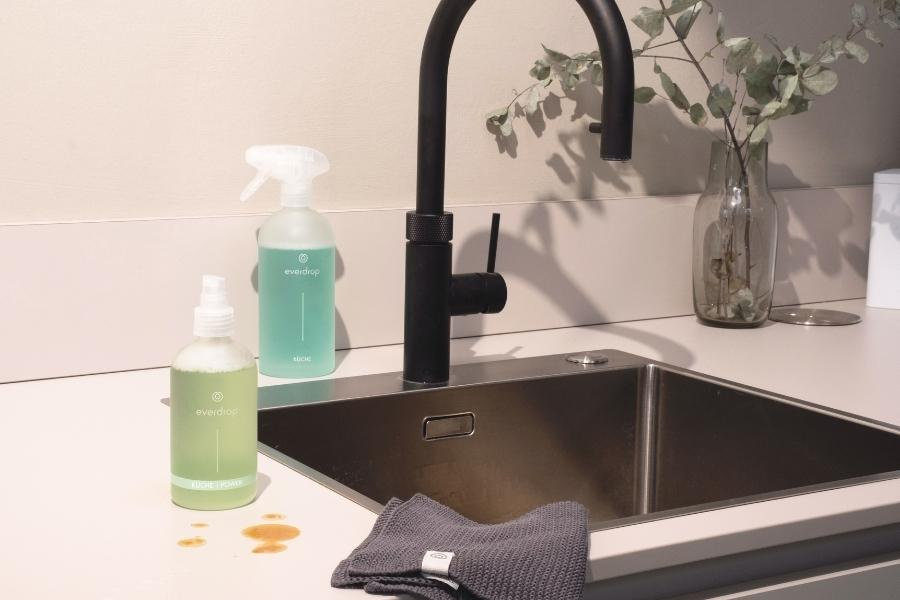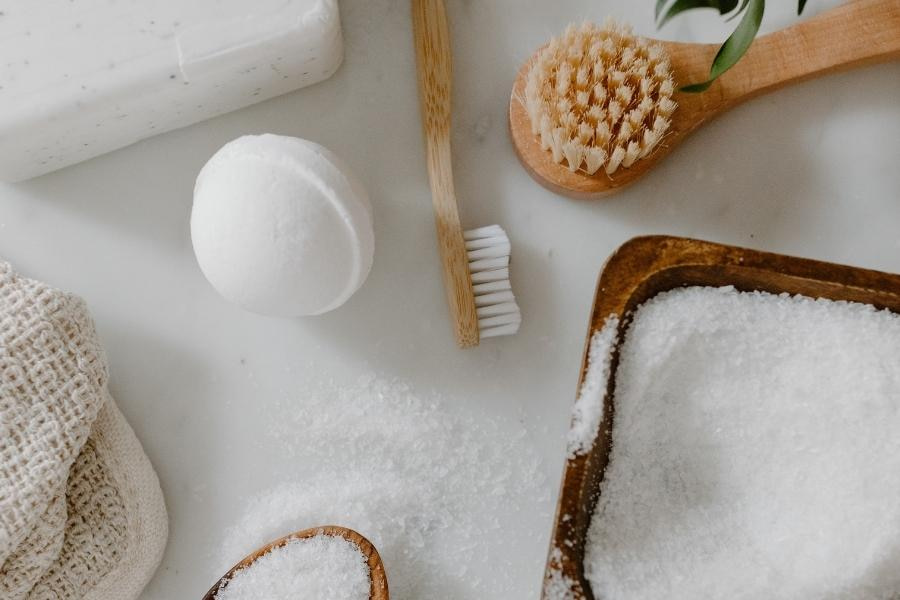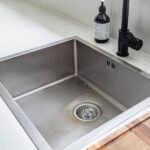Do you want to learn how to dissolve coffee grounds? Coffee grounds are useful, however, when used in the kitchen, they can cause a messy problem around the sink. The sludge left behind results from water and coffee grounds merging into one sticky mess. Isn’t it an awful thing to look at?
Contents
How to Dissolve Coffee Grounds
Coffee grounds can be a real problem when they get down the drain. They cling to the sides and stay put, even after they go down the sink This causes blockages, which are expensive and dangerous to clear. Use the following methods to dissolve coffee grounds in your sink.

Use Baking Soda and Vinegar
Baking soda, also known as sodium bicarbonate, is a common household product that can help clean drains. It has a natural scrubbing action that helps loosen and remove deposits. It is also mildly alkaline and can help neutralize the acidity of drain cleaners.
You can use this solution in your kitchen sink to remove stubborn grounds. However, it works best if combined with vinegar to create a foaming mixture that removes even more debris from your sink.
The Process
This is an effective way to dissolve grounds from your sink, however, it does take some time. The process is simple:
- Mix one part vinegar with two parts water in a spray bottle.
- Spray the mixture on the area where the grounds are stuck. Let it soak for about five minutes or until the area is completely wet.
- The mixture will begin fizzing and foaming, which means it is working its magic on those nasty grounds!
- Rinse thoroughly with warm water after this.
Pros
This method works well because sodium bicarbonate and vinegar are natural cleaners that are safe for use around foodstuffs such as meat products, vegetables, and fruit (as long as they don’t come into contact with each other).
They also have antibacterial properties, which makes them ideal for use around food preparation areas.
Cons
While this method does work well at removing grounds from your sink, it won’t work on all types of grounds. Some coffee clogs may require additional steps before using this method to get rid of them completely.
Enzyme Cleaners
An enzyme-based cleaner is the best way to get rid of grounds. These cleaners work by breaking down the organic matter in your pipes. Once broken down, it can be flushed away easily without causing any damage to your pipes or plumbing system.

The best enzyme-based cleaners for grounds are made from natural ingredients like citrus extracts and papaya enzymes. They are usually available in liquid form, so you can use them as needed without having to worry about storage space or shelf-life issues.
Pour the enzyme cleaner over your used coffee grinds and let sit overnight. In the morning, flush down the drain with hot water. The enzymes in this cleaner break down fats and oils in food waste, so they’ll dissolve your grounds quickly and easily.
- Pros: Natural ingredients to dissolve large amounts of grounds at one time – No harsh chemicals
- Cons: The only downside is that they might be unable to remove every last bit of residue from your sink.
Alkaline Coffee Maker Cleaner
Alkaline coffee maker cleaner is a household cleaner that can dissolve the grounds in your sink. The chemical composition of alkaline coffee maker cleaner is very similar to that of regular dish soap. It is sodium hydroxide or potassium hydroxide, also known as lye.
To use this method, follow these steps:
- Pour a small amount of the cleaner into the drain.
- Run hot water down the drain for about 10 minutes to allow it to work.
- Flush the drain with cold water to rinse any remaining residue from the cleaner.
Pros
The main advantage of using an alkaline coffee maker cleaner is that it will not leave an odor in your sink. Also, unlike many other household cleaners, it won’t irritate your skin or burn your eyes if it gets on them accidentally.
Cons
The main disadvantage of this product is that it will only work if you have hard water in your home.
Hard water contains high amounts of calcium and magnesium ions, which are essential for the chemical reaction for the grounds to dissolve properly.
If you don’t have hard water, this method probably won’t work for you because it requires high concentrations of these ions to work properly.
Baking Soda and Salt
Sodium bicarbonate and salt are two of the most common ingredients in your kitchen cabinet. They’re also effective at dissolving grounds in your sink. The trick is to use them together.
Baking soda is a base, and grounds are acidic so they will react with each other in corrosive ways. Here’s how it works:
- Add a few tablespoons of baking soda to a sink full of water.
- Pour in some salt, slowly stirring the mixture with your hand or a spoon. You want enough salt to make the water taste like seawater, however not so much that it becomes hard to stir or tastes too salty.
- Allow the mixture to sit for about 20 minutes until all of the grounds have dissolved.
Pros
This method is cheap and easy to do yourself at home. You can make a large batch of baking soda and keep it on hand for future use if you regularly have trouble with this issue.
Cons
You’ll need to buy an extra box of baking soda or two if you plan on using this method often — especially if you have several drains backed up due to grounds clogging them up.

Hydrogen Peroxide and Baking Soda
You can use hydrogen peroxide and baking soda to dissolve the grounds in your sink. This method works well, however, it will not remove all of them. You need to do a bit of scrubbing to get rid of all the grounds.
Hydrogen peroxide is a chemical compound that has the formula H2O2. It is the simplest of the hydroxyl acids, consisting of two hydrogens and one oxygen atom. It is a colorless liquid in three different concentrations (10%, 30%, and 50%).
Sodium bicarbonate provides an alkaline environment that breaks down the organic matter in your drain so it can be washed away easily by water running through your pipe system.
The steps for using this method are as follows:
- Mix equal parts of hydrogen peroxide and baking soda into a paste.
- Apply this paste onto the surface of your sink where there are still some grounds left over.
- Let it sit for about 10 minutes so the mixture can do its job and dissolve the grounds completely.
- Scrub with a brush until the grounds disappear from your sink’s surface.
Pros
The pros of these two methods are that they do not involve harmful chemicals or cleaners, which means they are safe for the environment and will not damage your pipes or drain system. They also require very little effort, as all you need to do is add either an oxidizing agent (hydrogen peroxide) or a base (baking soda) to the sink. You can even use both methods in tandem if your sink is particularly dirty!
Cons
The cons of these methods are that they may take time to work (depending on how dirty your sink is), and they might not completely dissolve all of the gunk on your sink bottom. If this happens, you will have to scrub away at some spots with a sponge or scrub brush before proceeding.
Conclusion
When making coffee, it is a good idea to be mindful of how much coffee grounds you put in the sink. If you avoid putting coffee grounds down the sink altogether, even better! If you choose to dispose of them this way in your home, learn how to dissolve the coffee grounds suggested above.



